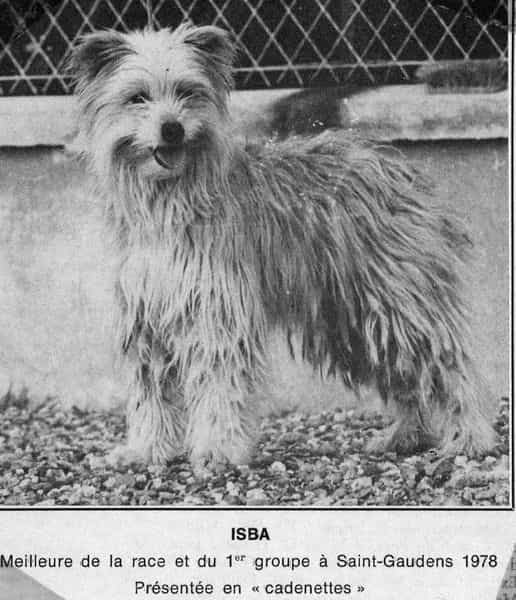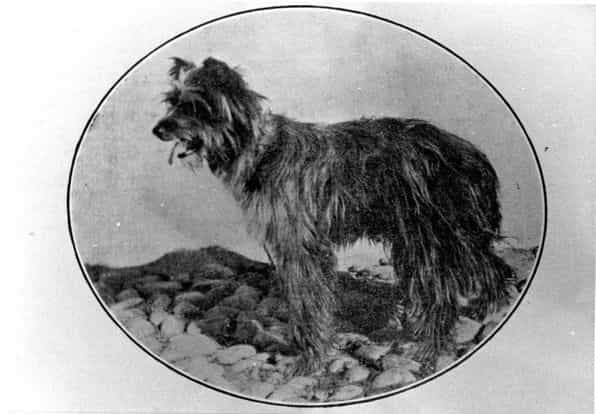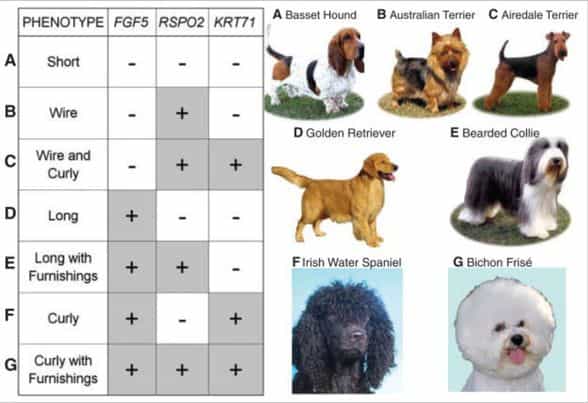To all our fans of the so-called cadenettes – please, take note of these irrefutable facts:
Mansencal’s statement 1971 is contrary to the cadenettes shown by Isba in 1978: N’OUBLIANT AUCUNE MÈCHE / keine Strähne / Zotte vergessend / not losing sight of a single villus!
Paul Mégnin refused clearly the cadenettes shown by Farou de l’Adour in Lyon 1928 – Farou gagnerait à être … DÉBARRASSÉ DE SES MATELOTTES ( „matelottes“ scilicet cadenettes) … il ne faut pas par un manque de toilette laisser ce poil devenir CE QU’IL NE DOIT PAS ÊTRE.
Paul Mégnin is not a nobody in the matter of K9 : He was the scientific editor/éditeur scientifique of the journal „L’Éleveur“ (periodical published from 1885 until 1939) and in this function successor of his father Jean-Pierre Mégnin (1828-1905). Father Mégnin was a veterinary surgeon and is considered in France as the father of modern „cynotechnie“. Paul Mégnin was a journalist and specialized in agriculture and particularly in cynotechnie. From 1915 until 1917, he was „directeur du chenil militaire de la 7ème armée“. As editor, Paul Mégnin (1868-1952) visited all the big dog-shows in France and abroad from 1905 until 1939. He is an eminent contemporary witness and his judgement should be taken seriously.
Documentation inventory: The vast majority of ancient pictures does NOT show BdP with cadenettes > https://vom-wunderhorn.de/historische-fotos-dokumente/. BdP with cadenettes are the „new normal“, better: the new abnormal only since 1978 – against the pyrenean tradition. In the late 1990ies, they enter the standard thanks to the normative force of the facts established by Mansencal as breeder-judge-influencer since 1978.
Genetics: It doesn’t matter wether the cordes are produced by
the recessive allel on KRT71 (rare in the breed but nevertheless it exists)
or by some other factors ( = length of coat and density and quantity of wool = sur-production de laine, as Mansencal puts it in 1971 = over-production of wool – this is the case for the majority of the cadenettes);
Translation: frisottant can be translated by shirring, frisé by nappy, frizzy, curly, kinky. My use of curled/curly does not implicate necessarily the presence of the recessive allele on KRT71. It implicates only that the coat is not nearly flat or slightly undulated (except only for croup and upper-leg where the standard wants more wool) – and therefore, it is a fault.
Standard: Since its very beginning, the standard wants the coat keeping the balance between goat-texture and sheep-wool – the coat should not be unilaterally sheep-wool as Susan Buttivant puts it: As the hair gathers it remains in the coat and naturally divides, like the sheep’s wool divides naturally. When Susan Buttivant and other colleagues prefer mere sheep-wool they are in contradiction to the standard – he describes: plus fourni et plus laineux sur la croupe et les cuisses, sa texture tenant le milieu entre le poil de chèvre et la laine de brebis. The coat even on croup and upper-leg must keep the balance between goat-hair and sheep-wool.
Practicality: Cadenettes are not functional contrary to the opinion of Joke Rooding ( cadenettes are a very functional coat ) and many other colleagues – Mansencal puts it in 1971 in this way: Évidemment on pourra objecter qu’en montagne nos braves paysans ne brossent pas leur chien. C’est peut-être vrai. Mais les ajoncs, les bruyères, les épineux sont là pour faire naturellement ce travail, et c’est ainsi que les chiens vivant dans nos villages des hautes vallées ont toujours une texture de poil de grande qualité. In 1971, Mansencal replaces les ajoncs / les épineux with le peigne métallique … The coat WITHOUT paquets de poil (as Mansencal puts it) / matelottes (as Mégnin puts it) / scilicet cadenettes is a COAT OF GREAT QUALITY !!! A BdP débarrassé de ses matelottes is a BdP in a good condition – a BdP with matelottes / cadenettes is in a bad condition!
Taste: Cadenettes are not a matter of taste as Joke Rooding puts it: Cadenettes or no cadenettes, it will always be a matter of taste. Cadenettes are a question of correct or not correct. And as Paul Mégnin puts it in 1928, a coat with matelottes / cadenettes is a coat as it should not be: … ce qu’IL NE DOIT PAS ÊTRE. There is not a lot of freedom for taste.
Der Standard fordert von Anfang an (1926) bis heute:
Das Fell ist fast glatt oder leicht gewellt –
le poil est presque plat ou légèrement ondulé –
the coat is nearly flat or slightly undulated.
Er weist als schweren Fehler aus:
Fell mit der Tendenz zur Lockenbildung –
poil frisottant –
coat with tendency to curl.
Er weist als disqualifizierenden Fehler aus:
Gelocktes Fell – poil frisé – curled coat.
Fast glattes oder leicht gewelltes Fell ist keine Basis für Cadenetten, wohl aber ist ein gelocktes Fell im Zusammenspiel für die Information Langhaar und die Information Unterwolle mit „surproduction de laine / übermäßige Produktion von Unterwolle / abundant production of wool fibre“ die Basis für die Cadenetten. Das bedeutet: Die Cadenetten verdanken sich der Missachtung des Standards, denn man muss eigentlich zu disqualifizierende Hunde trotzdem zur Zucht zulassen, um Cadenetten-Bergers hervorzubringen.
Die Cadenetten wurden Ende der 1990er Jahre in den Standard aufgenommen – die damaligen Autoren waren sich des genetischen Widerspruchs nicht bewusst, den sie mit der Einführung der Cadenetten in den Standard eingebaut haben. Das ändert nichts an der Tatsache, dass Cadenetten absolut unpyrenäisch sind. Sie sind zudem für den Hütehund im kühlen und feuchten Hochgebirge kontraproduktiv, da sie Dreckfänger und Feuchtigkeitsspeicher sind – dann wird das durch die Cadenetten bereits erhöhte Gewicht des Fells noch zusätzlich durch die Feuchtigkeit erhöht.
Mansencal hat 1978 erstmals einen Berger mit Cadenetten präsentiert: Isba. Von diesem Zeitpunkt an brauchte es nur 20 Jahre, damit die normative Kraft des Faktischen die Cadenetten in den Standard zwingt.

Wer um 2000 erstmals den BdP kennengelernt hat, lernte ihn mehrheitlich mit Cadenetten kennen und hielt diese Ausstattung für typisch. Ein großer Irrtum zum Schaden der Rasse !
1928 wurde ein Cadenetten-Berger auf der großen Hundeschau in Lyon gezeigt: Farou de l’Adour.

Paul Mégnin, der Wissenschaftliche Redakteur der damals führenden Zeitschrift „L’Éleveur / Der Züchter / The Breeder“, würdigte Farou de l’Adour und kritisierte dann den Zustand des Fells: So dürfe ein Berger nicht auf Ausstellungen gezeigt werden, der Hund würde durch eine intensive Fellpflege eher überzeugen als durch die „matelottes“, wie Mégnin die Fellplatten und Cadenetten bezeichnete.

1971 beschrieb Mansencal in der Zeitschrift „La Vie Canine“ auf Bitten vieler Leser seine Methode, den Berger auf die Ausstellung vorzubereiten: Er kämme die Hunde radikal aus, „n’oubliant aucune mêche“!

Seit 1978 praktiziert er das Gegenteil, indem er möglichst alle „mêches“ im Fell belässt, nur da, wo sie die elegante Silhouette eines Hundes beeinträchtigen, hat er sie entfernt.
Mansencal war ein großartiger Züchter, der den Phänotyp des Berger des Pyrénées auf ein vorher nicht gekanntes Niveau gehoben hat – leider hat er ab 1978 den Berger des Pyrénées gegen jede pyrenäische Tradition denaturiert.

